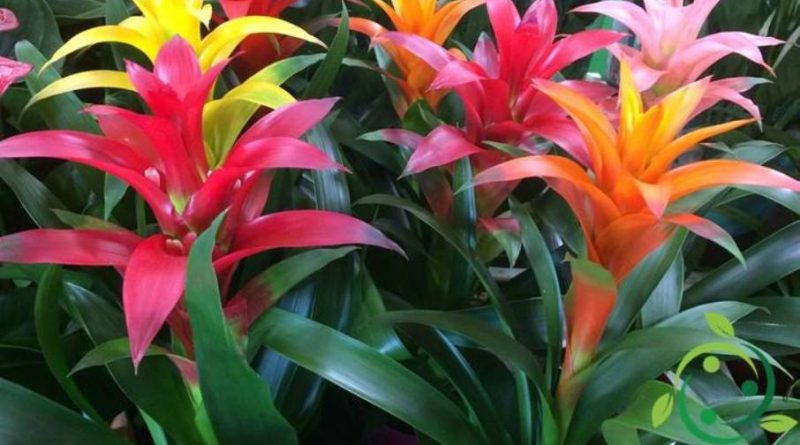How to grow Guzmania
How to grow Guzmania
Guzmania (Guzmania Ruiz & Pav.) Is a genus of plants of the Bromeliaceae family that includes over 200 perennial and evergreen species, mainly epiphytic, more rarely terrestrial; these are plants originating from the tropical forests of central and southern America.
The Guzmanias can be recognized for their soft arched leaves of a bright shiny green color, with the central cup, composed of scarlet bracts or bright orange, which bears small yellow or white tubular flowers, grouped in spikes or panicles, with winter flowering.
These plants can reach a height ranging from 20 cm up to 1 m.
In this card we will see how to grow Guzmania considering that the ones that are most grown are:
– Guzmania berteroniana – originally from Puerto Rico, it has an erect floral stem, about 40 cm high, with dark red oval bracts. The flowers are yellowish in color;
– Guzmania devansayana – has leaves that reach 60 cm streaked with red, bracts bright red with white flowers;
– Guzmania lingulata – It grows wild in Brazil, with numerous varieties, it has lance-shaped leaves with an entire margin, pointed and quite rigid, up to 45 cm long, shiny green on the upper side and reddish on the lower side, the small white-yellowish flowers grouped in an inflorescence carried by a stem of 20–30 cm, almost hidden by the red bracts. It flowers in spring-summer only once in its life, the buds that develop at the base can be repotted;
– Guzmania minor – hardy plant in epiphytic flat, evergreen flowers only once in their lives, the leaves are green lanceolate, the ear-shaped flower in the center of the rosette of red or orange leaves;
– Guzmania monostachia – originally from Central America, Brazil and Florida, about 40 cm tall, it bears narrow and arched leaves the yellow flowers gathered in an ear just come out from the bracts about 40 cm long;
– Guzmania musica – originally from Panama and Colombia, it is characterized by pink-colored bracts that cover the floral stems with yellow flowers,
– Guzmania sanguinea – species with green lance-shaped leaves suffused with red and yellow, the red bracts form a rosette with a central inflorescence composed of white-yellowish flowers.
These plants should be grown by choosing a bright exposure and not in direct sunlight; the climate must be, if possible, a warm-humid climate.
The substrate on which to grow it must also be porous mixed with sand and with a tendentially acid pH.
The pH of neutral soils can be corrected by adding acid peat and silceous sands.
For the water supplies it is necessary to provide with abundant watering in summer and scarce in winter period in which the plant enters in vegetative rest.
Fertilizations must also be carried out in the spring-summer period, on average every 3 weeks, with specific liquid fertilizer for flowering plants appropriately diluted in the water used for watering.
The Guzmanias propagate through the side shoots of the mother plant. This operation must be carried out in the period of April period in which the new plants will have emitted the roots and for the plant fresh and soft soil mixed with sand is used. The vases should be kept in a place sheltered from drafts.
The new plants thus obtained will bloom after 2-3 years.
To favor the emission of lateral shoots it is advisable to cut the central rosette after flowering, in addition it is advisable to periodically wash the leaves using a damp cloth to remove the dust and carry out leaf sprays in winter.
Plants grown in pots will have to be repotted, on average every 2 years or only when the side shoots have occupied all the available space of the pot.
Among the adversities of Guzmania we remember the red spider, whose presence is detectable by the presence of cobwebs and the discoloration of the leaves, and the aphids that make the leaves sticky. In the event of stagnation, the root rot may also occur, so excessive watering should be avoided.

